Keep Your Steaks Simple

As a rule, I try to make sure that when I go out to eat, I order something I cannot or would not make at home. Dining out in Chicago can be expensive, and I want to make sure I get the most bang for my buck!
When I moved to Chicago almost a decade ago, I was surprised by the number of steakhouses I found here. As the meatpacking hub of the Midwest, it’s not a surprise that this city takes pride in its steaks, chops, and roasts. I’m a Southerner, so I was unused to the sheer amount of quality meat establishments I found here. When my husband and I began dating, I asked him to take me to a “real” steakhouse, since I was still new to the area, he obliged, and to be honest, I was not wowed. When his brother, a rancher out in North Dakota, came to visit, we went to another steakhouse. His brother was similarly unimpressed. “There seems to be a lot of food, but nothing truly stands out,” he said. I thought about this some more, and he was right. At a steakhouse, shouldn’t the steak be the star?
I’ve had the privilege to work with several chefs here at The Chopping Block, and one of my favorite classes is our Steakhouse DIY class. Straightforward and delicious, this class takes some of the mystery and frills out of the steakhouse experience and reduces it to what I believe it should really be about: good, simple food. No matter who is teaching it, we always focus on two key things - great ingredients and great flavors. Here are a few tricks I’ve picked up along the way.
First things first, you need to go shopping. To make a simple meal like steak and potatoes, you need well... steak and potatoes. But not all steaks are created equal. When you shop for beef, there are a few signs to be on the lookout for:
All meat in the United States is inspected by the USDA. Based on the amount of marbling or fat, the age of the beef carcass, and several other complicated inspection criteria, the USDA gives the meat a grade. The higher the marbling and the younger the beef, the higher grade it receives. In your local grocery store you will find Prime, Select and Choice grade meat. (There are two other grades, but they are used mostly for things like microwaveable frozen burritos or dog food... gross.)
- USDA Prime steaks are the best you will find in most area stores. Prime steaks are top rated for their quality marbling (the fat is evenly spread throughout the meat, giving it more flavor), tenderness, and juiciness. Prime meat generally comes from younger animals, as they have done less work, making their meat more tender. Most steakhouses use Prime meat, and feature cuts like the filet mignon and ribeye as their stars.
- The next grade is Choice, which is some of the most commonly purchased beef. Tenderloins and rib steaks tend to be Choice grade.
- Select grade beef is the lowest grade beef. Any package of beef that does not say USDA Prime or USDA Choice is going to be Select. I would use this for stews, soups, or anything that I can cook for a long time to add more flavor and break it down. Check out Milan’s blog about where to buy your meat. Don’t be afraid to speak up and ask your butcher questions. You should feel confident when picking your dinner!
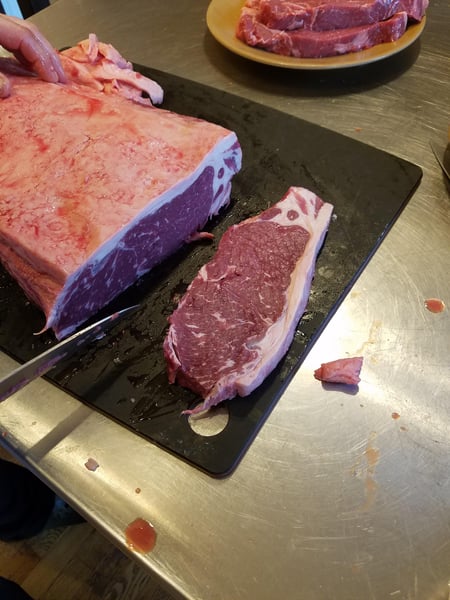
So, now that you have your steak, what do you do with it? In many steakhouses, you will see many different sauces and toppings you can add to your steak. Personally, I’m a purist. I just want the meat to shine, and I don’t want to drown it in rich sauces or cover up the flavor with a seafood addition. The only things you need to make your steak the star are salt, pepper, and oil. That’s it. Oh, and a hot cast iron pan. Cast iron is the BEST way to cook almost anything, but that’s a blog for another time.
I like to use coarse kosher salt. Its crystals are large enough to see and they dissolve and penetrate the meat nicely. Add some fresh ground pepper, and that is it. No garlic salt or fancy rubs. When you buy a quality steak, you want to taste what you paid for, right? Right. I know it looks like I went overboard on the salt, but trust me, it needs it. The salt is going to help tenderize the steak and get flavor all the way through it. I want juicy, delicious, meaty flavor with every bite, not just on the surface.
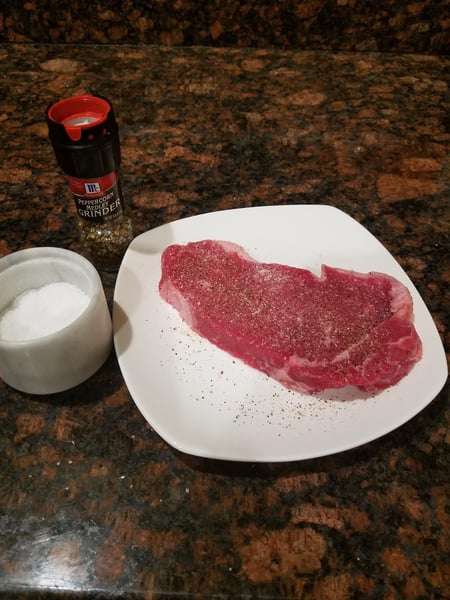
The next key to a good steak is taking your time. Your steak should come out of the fridge and up to room temperature about 20 minutes before you want to cook it. You want the steak to cook evenly, and if the outside is warm but the inside of the steak is cold, it won’t cook all the way through evenly. Next, get a nice heavy pan (cast iron preferably) and crank the heat up.
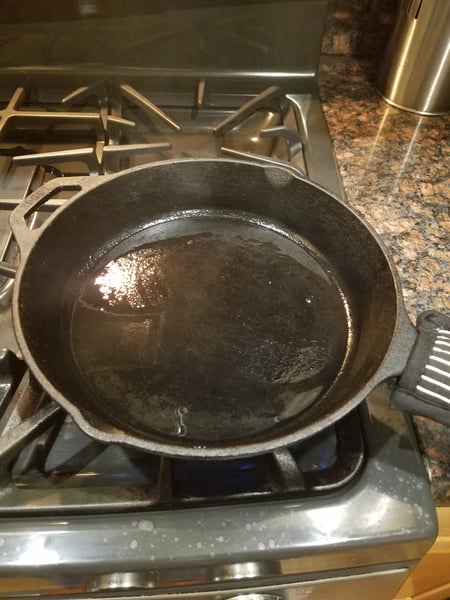
Add a few tablespoons of grapeseed or canola oil and watch for the pan to begin smoking. Once it’s ready, add your steak. Depending on how thick your steak is, you’ll want to sear it on both side for about 3 minutes each. Resist the urge to fuss with your steak! So many people want to flip their steak several times, but in order to form that delicious crust on the outside, you have to leave it alone. Only flip it once, and then leave it alone again.
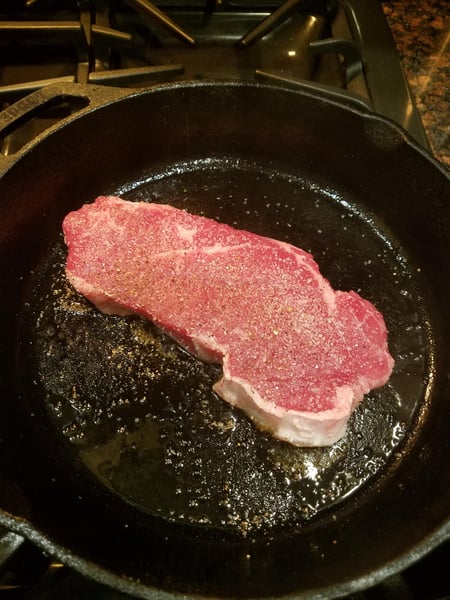
Once your steak has reached the level of doneness you prefer, remove it from the pan and place it on a cutting board to rest. This is part of taking your time. Do not slice into your steak! Let it rest for about 10 minutes. You want the juices to redistribute and cook down a little bit, so they don’t run out of the steak as soon as you slice it. Just think, you went through all this trouble, and then you slice your steak too soon and all that goodness floods out onto your cutting board. That would be a tragedy.
Once it’s time, slice into that bad boy and enjoy. There is nothing like a good steak, and that’s exactly what a good steak needs - nothing.
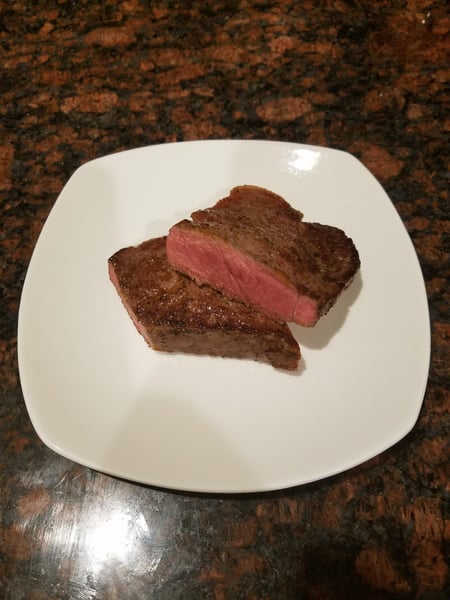
For more tips on cooking steaks, download The Chopping Block's new download A Home Cook's Guide to Butchery.

